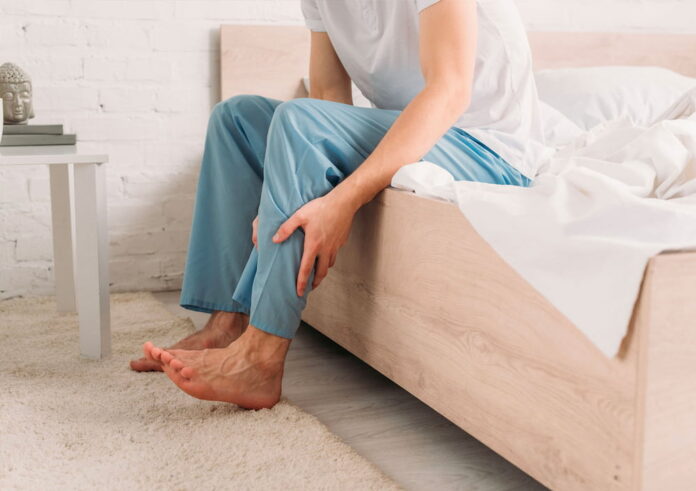Varicose veins are caused by circulatory system dysfunction. Although varicose veins can appear everywhere on the body, they are most commonly found in the legs. Varicose veins are linked to several leg disorders. What are these syndromes, and how do they affect varicose veins? In this post, we will solve these doubts, and you will learn more about varicose veins.
Varicose veins, a problem beyond aesthetics
Varicose veins are mostly considered only an aesthetic problem because of the appearance they cause on the skin. When they affect the legs, these veins are visible to the naked eye because they protrude from the skin due to dilatation.
Varicose veins are distinguished by their shape: bulging, twisted, blue, and reddish. This appearance results from an accumulation of blood and a widening of the veins. In some cases, improper blood flow may lead to the formation of life-threatening blood clots.
Symptoms of varicose veins
Depending on the severity of the condition, people with varicose veins in the legs may experience the following:
– Night cramps
– Pain
– Swelling, itching, and heaviness in the legs
– Irritation and changes in skin coloring
– Ulcers
Symptoms may worsen after prolonged standing or sitting. Sometimes varicose veins can limit a person’s activities.
People more likely to have varicose veins
Some factors increase the likelihood of varicose veins. Some of these factors are:
– Older age
– Family history of circulatory problems
– Sedentary lifestyle
– Obesity
– Being a woman
Syndromes of the legs and their relation to varicose veins
Some syndromes have been related to the presence of varicose veins; however, this association is still unclear. Among these syndromes are:
1) Restless legs syndrome
People suffering from this syndrome have an uncontrolled impulse to move their legs due to severe discomfort. The feeling is briefly relieved by movement. It is more prevalent in the evening or at night, and many have involuntary leg movements while sleeping.
The origin of this condition is unknown at this time, although it can induce sleep disruptions and daytime tiredness. Varicose veins and venous insufficiency are prevalent in persons with restless legs syndrome, but their association is uncertain.
2) Periodic limb movement disorder (PLMD)
PLMD is a condition in the legs that causes them to move uncontrollably while the person sleeps. The contractions in the legs occur every 20 to 40 seconds during sleep and can last from less than 1 second to 10 seconds. These nocturnal movements do not awaken the sufferer but can be perceived by the bed partner.
However, this disorder can disrupt sleep because it may occur just as the person falls asleep. The causes of this disorder are unknown, but it is common for people with narcolepsy to have it.
Doctors who treat this disorder evaluate whether the person has a vascular disease or varicose veins. These conditions can also cause involuntary movements and discomfort in the legs during sleep.
3) Economy class syndrome
This syndrome refers to the appearance of blood clots due to poor mobility. It is named after various factors related to a flight (such as immobilization, low humidity, and hypobaric hypoxia) and the person’s condition (obesity, use of contraceptives).
People who are older, obese, have cancer, or have recent surgeries are more likely to suffer venous thromboembolism during air travel. Also, people with varicose veins have a moderate risk of clot creation.
Conclusion
Varicose veins are a common problem among the female population. While it is not yet known how the leg syndromes related to varicose veins, physicians have observed that some patients with varicose veins have some of the previously mentioned syndromes. See a vein doctor if you have varicose veins; they can help you find the best treatment.
Read Also
- How to Find a 5-Star Dentist Near YouChoosing a dentist is more than just finding someone who can clean your teeth. It’s about selecting a trusted partner in your long-term oral health. A 5-star dentist not only provides excellent clinical care but also delivers a positive patient experience, from the moment you walk in until the moment you leave. Whether you’re new… Read more: How to Find a 5-Star Dentist Near You
- Your Easy-Peasy Guide to Brewing Amazing MatchaHey there! So, you’ve heard all the buzz about matcha – that vibrant green powder that’s not just pretty but packed with good stuff? It can seem a little fancy and intimidating at first, but trust me, making a delicious cup at home is simpler than you think. Forget complicated ceremonies for now; let’s just… Read more: Your Easy-Peasy Guide to Brewing Amazing Matcha
- Embracing Holistic Wellness: Insights from a Lansing, MI Health CenterReframing Health: Moving Beyond Symptom Management Treating only symptoms often offers quick relief, yet long-term results stay out of reach. When care zeroes in on isolated complaints, the bigger picture, such as stress, behavior, or lifestyle, often gets missed. Research shows that whole-person care, which looks at physical, emotional, and environmental factors, yields better outcomes… Read more: Embracing Holistic Wellness: Insights from a Lansing, MI Health Center
- VO₂ Max Testing Explained: What It Is & Why It Matters for Your HealthVO₂ max sounds like a term reserved for elite athletes, but it’s among the most accurate measures of your lifetime and general condition. Moreover, it goes beyond performance. Monitoring your VO₂ max will help you to ascertain your body’s capacity to control stress, its oxygen consumption efficiency, and your internal ageing process. If you have… Read more: VO₂ Max Testing Explained: What It Is & Why It Matters for Your Health
- So, what exactly is matcha?Think of matcha as green tea turned up to eleven! Instead of steeping leaves and tossing them out, matcha is made by grinding whole green tea leaves into this super-fine, vibrant green powder. You whisk it right into hot water (or milk!), meaning you’re drinking the entire leaf. That’s why folks say you get way… Read more: So, what exactly is matcha?






